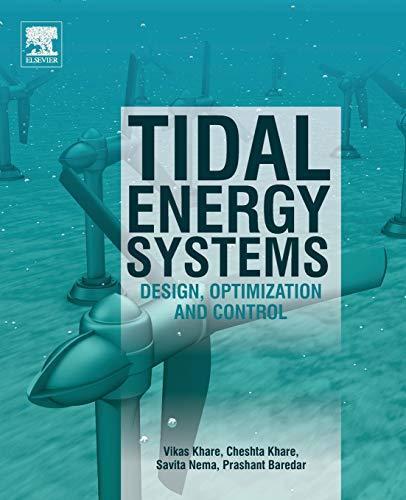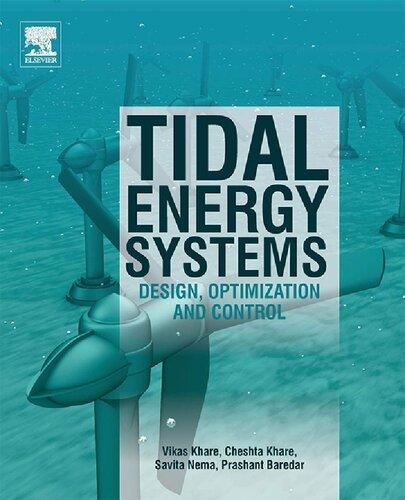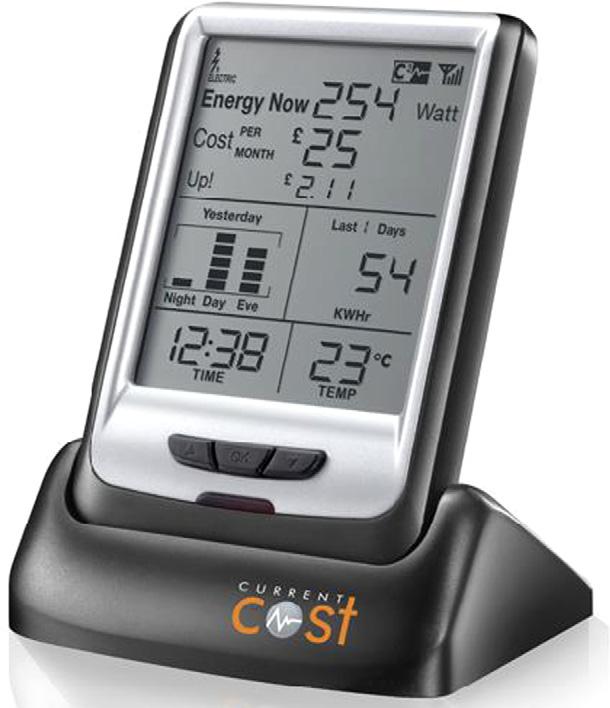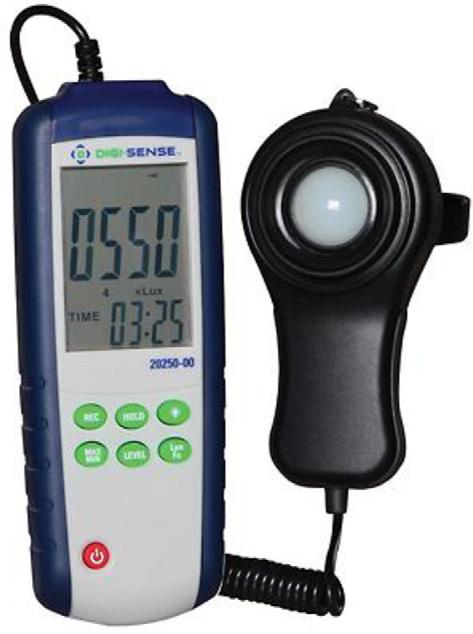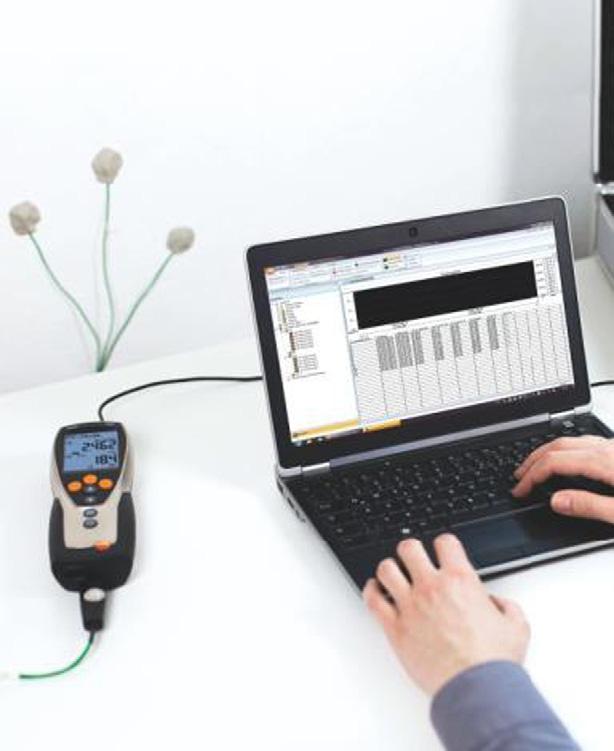5.1 EnergyAuditing
AmineAllouhiandAliBoharb, SidiMohamedBenAbdellahUniversity,Fez,Morocco RahmanSaidur, SunwayUniversity,Selangor,MalaysiaandLancasterUniversity,Lancaster,UnitedKingdom TarikKousksou, UniversityofPauandPaysdel'Adour,Pau,France
AbdelmajidJamil, SidiMohamedBenAbdellahUniversity,Fez,Morocco r 2018ElsevierInc.Allrightsreserved.
5.1.1Introduction
5.1.2FundamentalsofEnergyAudit
5.1.2.1Definition3
5.1.2.2ClassificationofEnergyAudits3
5.1.2.2.1Industrialenergyaudits
5.1.2.2.2Commercialenergyaudits
5.1.2.2.3Residentialenergyaudits
5.1.2.3EnergyAuditLevels4
5.1.2.3.1ASHRAELevel1 –
5.1.2.3.3ASHRAELevel3
5.1.2.4EnergyAudit:GeneralProcedure5
5.1.2.4.1Preparationphase
5.1.2.4.2Executionphase
5.1.2.4.3Reportingphase
5.1.3.1MeasuringElectricalParameters7
5.1.3.1.1Electricenergymeters
5.1.3.1.2Electricalnetworkanalyzers
5.1.3.2.1Thermometers
5.1.3.2.2Infraredthermometers
5.1.3.2.3Anemometers
5.1.3.2.4Humiditymeasurements
5.1.3.2.5Carbondioxidemeter
5.1.3.2.6Lightinglevelmeasurements
5.1.3.2.7Heat fl uxmeter
5.1.3.2.8Blowerdoortest
5.1.3.3OtherMeasurements14
5.1.3.3.1Combustionanalyzers
5.1.3.3.2Speedmeasurements
5.1.3.3.3Leakdetectors
5.1.3.3.4Flowmeters
5.1.4EnergyEf
5.1.4.1BuildingEnvelope16
5.1.4.1.1Thermalinsulation
5.1.4.1.2Windows
5.1.4.1.3Externalshading
5.1.4.1.4Reductionofairinfiltration
5.1.4.2Heating,Ventilating,andAir-ConditioningSystems19
5.1.4.3ElectricalSystems20
5.1.4.3.1Transformers
5.1.4.3.2Qualityofelectricalenergy
5.1.4.3.3Electricalmotors
5.1.4.3.4Lightingsystems
5.1.4.4Compressed-AirInstallation24
5.1.4.5CombustionInstallations25
5.1.5CaseStudy:EnergyAuditing
5.1.5.1Introduction25
5.1.5.2 Methodology
5.1.5.2.1Manufacturingprocess
5.1.5.2.2Auditprocess
5.1.5.2.3Datacollectionandmeasurements
5.1.5.2.4Mathematicalformulations
5.1.5.3Analysis
5.1.5.3.1Profileofmonthlyelectricityuse
5.1.5.3.1.1Monthlyelectricityprice
5.1.5.3.1.2Subscribedpower
5.1.5.3.2Transformers
5.1.5.3.2.1Energylossesintransformers
5.1.5.3.2.2Analysisofenergyqualityintransformers
5.1.5.3.3Energy-intensivemotors
5.1.5.3.3.1Motorswithoutvariablefrequencydrive
5.1.5.3.3.2Motorsequippedwithvariablefrequencydrive
5.1.5.3.4Compressed-airinstallations
5.1.5.4ActionsPlanandAnalysis
5.1.5.4.1Action1:revisethesubscribedpowers
5.1.5.4.2Action2:adopthigh-efficiencytransformers
5.1.5.4.3Action3:improvingenergyefficiencyofelectricmotors
5.1.5.4.4Action4:installvariablefrequencydriveatlow-loadmotors
5.1.5.4.5Action5:installationofvariablefrequencydriveatthecompressedaircompressor
5.1.5.4.6Action6:treatmentofharmonicpollution
5.1.5.5Conclusions
5.1.6ClosingRemarks
Nomenclature
AEPAverageelectricityprice(excludingtaxes), MAD/kWh
AESAnnualenergysaving,MWh/year
APmax Monthlymaximalactivepower,MW CFConsumptionfee,MAD
ECEnergyconsumed,MWh
Eee Efficiencyratingofenergy-efficientmotor,%
EPx Electricitypricesforthetimeslice x,MAD/kWh
Esrd Standardmotorefficiencyrating,% FEPCFeeoftheexcessofsubscribedpower,MAD
Greekletters
Z Efficiency
ZREC Averageseasonalef ficiencyoftheheat recoveryunit
Abbreviations
CCompressor
CO Carbonmonoxide
CO2 Carbondioxide
SCSpecificconsumption
DPFDisplacementpowerfactor
hHours
HVHighvoltage HVACHeating,ventilationandairconditioning
IDPF Increaseduetoadisplacementpowerfactor below0.8,MAD
PBPaybackperiod,years PCPowercost,MAD PSPPriceofsubscribedpower,MAD/kW r Reductivecoefficient SPSubscribedpower,MVA TECTotalenergyconsumption,MWh THDITotalharmoniccurrentdistortion,% THDVTotalharmonicvoltagedistortion,% V Volumeofthespacetobeheated,m3
l Thermalconductivity,W/mK raca Volumetricheatcapacity,Wh/m3 K
LEDLight-emittingdiode MADMoroccandirham MotMotor Mot-VFDMotorwithVFD MVMediumvoltage RMSRootmeansquare TrTransformer VFDVariablefrequencydrive
definedthreeprogressivelevelsofaudits.Eachauditlevelreliesonthepreviouslevel.Obviously,thecomprehensivenessofthesite assessment,theamountofdatacollectedandthedetailprovidedinthe finalauditincreaseswiththeauditcomplexity,butthe potentialofenergysavingbecomeshigher.TheASHRAEenergyauditlevelsarediscussedbelow [10].
5.1.2.3.1ASHRAELevel1 – walk-throughanalysis/preliminaryaudit
TheLevel1audit,knownalsoas “walk-throughaudit,”“simpleaudit,” or “screeningaudit,” isthebasicstartingpointforenergy conservation.Itistypicallyusedincommercialbuildingsandsmallormediumindustrialsiteswheretheenergy-consuming systemsarequitesimpleandthelikelyareasofpotentialenergy-savingmeasuresareknowninadvance.
TheASHRAELevel1auditisgearedtowarddefiningthetypeandnatureofenergysystems,preliminarilyanalyzingthesite's energyconsumptionandidentifyingthesimplestandmostcost-effectiveenergyupgrademeasures.Onthisbasis,inthisaudit type,readilyavailabledataaremostlyusedfortheanalysisofenergyuseandperformanceofthestructure.Limitedmeasurements arecarriedoutandextensivedatacollectionisnotrequired.Ashortreportlistingthe findingsandabasiceconomicanalysisofthe improvementsis finallyelaboratedwithoutnecessarilyprovidingdetailedrecommendations,exceptforveryvisibleprojectsor operationalfaults.
Despitethedegreeofsimplicityofthistypeofaudit,itmustbeconductedbyanexperiencedauditor.Thecompletiontimeof the"walk-through"auditisverylimitedandthereforetheauditorhastomakequickandcorrectandprofitabledecisions.
5.1.2.3.2ASHRAELevel2 – energysurveyandanalysis
TheLevel2energyauditbeginswiththe findingsoftheLevel1audit,andevaluatestheenergysystemsoftheauditedstructurein moredetailtoproposeawiderangeofpotentialenergyefficiencyimprovements.Theapproachdiffersdependingonthestructure type(residential,commercial,orindustrialstructure),butinallcases,moredetaileddataandinformationareneeded.
Detailedmeasurementsanddatainventoryareusuallycarriedoutanddifferentenergysystemsareextensivelyexamined.
Theenergyefficiencymeasures(EEMs)forthisaudittypearenotdirectorobviousasinthecaseofLevel1auditandgenerally necessitatehigherinvestments.
Forresidentialbuildings,theEEMsincludetheassessmentofthebuildingenvelope,HVACsystems,lightingdevices,domestic hotwaterproductionsystemand “plugloads.” Intheindustrialsector,thefocusismainlygearedtowardtheassessmentofhighly specializedequipment,suchascompressedair,Mots,andprocessmachines.The firststepinthistypeofauditistodeeplyanalyze theenergyconsumption;quantifybaseloads;identifyenergy-intensiveapplications,usagepatterns,andseasonalvariation;and determineenergycosts.
Accordingtotheauditedstructure,duringtheauditprocess,thereshouldbedetaileddiscussionswiththebuildingownership orfacilitymanagerandfacilityoperationandmaintenancestafftoidentifypotentialproblemareas,andclarify financialand nonfinancialtargetsoftheprogram.
Aclearandconcisereport,includinganactionplantoimprovetheenergyefficiency,generalfutureperformances,and economicmetricsiswritten.Ameetingisthenplannedwiththeclienttoclarifytheauditresults,prioritizeEEMsandgivewaysto evaluateandimplementthem.Someoftheproposedmeasuresarelow-costorcanbeimplementedquickly,resultinginashort PB.Othermeasuresrequirehigherinvestmentsorconsiderablechanges.Here,theauditorshouldhelpinthedecision-making processanddefinethe firststepsoftheimplementationphase.
5.1.2.3.3ASHRAELevel3 – detailedanalysisofcapitalintensivemodi fications
SomeofthesystemupgradesoutlinedbytheLevel2energyauditmayrequiredetailedanalysisofpossiblecapital-intensive modifications,includingmodelingandsimulation [11]
This typeofaudit,whichissometimescalledaninvestmentgradeaudit(IGA),isintendedtoprovidesupplementaryengineeringaccuracyformorecostlycapitalprojectswhereuncertaintyislesspermittedsinceinvestorsoftendemandguaranteed savings.Therefore,theLevel3auditinvolvesacollectionofdataoveralongertimeperiod,anaccuratemodelingofEEMs,an estimationpower/energyresponse,detaileddesignofconstructiondocuments,anddetailedcostingestimates.Typically,ascopeof workandschematicsareprovidedsothatthecontractorsinstallingthemeasuresunderstandexactlywhatistobeinstalled. Investmentlevelscanvaryfromtensofthousandstotensofmillionsofdollars.
Dynamicsimulationsoftwarepackagesareoftenusedtoperformenergycalculationsinthisaudittype.Inthecaseofindustrial activities,dataloggerstypicallywillbeemployedtomonitoroperationmodesofpumpsandMots,hourlytemperaturesand humidityvariationofaffectedspaces,switchingbehavior,andotherparameters.Thesedataarethenusedtocalibratethecomputer modelofthestructureanditsvariousenergysystems.Futurechangescanbeaccuratelysimulatedandtheresultsarethoroughly validated,whichgiveastrongsupportduringthedecision-makingprocess.
5.1.2.4EnergyAudit:GeneralProcedure
Toconductanenergyaudit,asystematicapproachisrequiredinwhichthedepthofthedatacollectionandanalysismightbe differentdependingonthelevel,scope,andobjectivesoftheaudit.Generally,therearefourmainphases,eachofwhichhas severalsteps.Thesephasesandstepsarereportedin Fig.1
(1) Audit preparation
Defining audit level, criteria and scope
Selection of audit team
Setting objectives
Planning the audit
Data collection
Preliminary analysis
(3) Audit reporting
Writing the energy audit report
Communicating with the client
Prioritizing and decision-making support
Fig.1 Energyauditprocedure.EEMs,energyefficiency measures.
5.1.2.4.1Preparationphase
(2) Audit execution
Data inventory and measurements
Analyzing energy use patterns
Diagnosing energy systems
Exploring and comparing opportunities
Identifying potential EEMs
Economical assessment
(4) Post-audit activities
Implementing EEMs
Checking performances
Maintaining measures
Beforestartingtheenergyaudit,thelevel,criteria,andscopeagainstwhichtheauditwillbeconductedshouldbedefined.An energyauditteamshouldbeestablishedtoorganizeandmanagetheauditprocess,especiallyatthefacilitylevelwhereaudit activitiesaremoreintenseandoftenrequirevariousskillsandcapabilities.Ifneeded,hiringoutsideexpertsisrecommended tocarryoutathoroughaudit.Inthisphase,itisalsoimportanttosetobjectivesinharmonywithsiteboundary,timeline, andstaffinvolvement.Astheauditprocessisgenerallycomplex,planningtheactivitiestooutlinestrategiesandproceduresis mandatory.Theauditormayusechecklistsinordertoconducttheworkinasystematicandconsistentway.Oncethesesteps areperformed,thedataandinformationcollectionprocesscanbegin.Presentandformerenergyusepattern,construction, andenergyutilizationofeverybuildingorunitshouldbecharacterized.Thesedataandinformationcanbefoundthankstoa well-structuredandaccuratequestionnaire,whichwillbeansweredduringthe firstmeetingbetweentheenergyauditorand theclient.
5.1.2.4.2Executionphase
Energyauditscantakefromfewweekstoseveralmonthstocomplete,dependingonthesitenatureandcomplexity.Theaudit processstartsattheutilitymeterswhereenergy flowsareidentifiedandsourcesofenergycomingintoabuildingorfacilityare measured.Datainventoryisestablishedtocharacterizetheuseandoccupancyoftheauditedstructure.Analysisofenergypatterns forspecificplantdepartmentsoritemsofprocessequipmentareinvestigated.Thediagnosisoperationsleadtoanidenti ficationof opportunitiesforenergyefficiencyimprovements.Theseopportunitiesmustbecarefullyassessedandcomparedtoidentifythe mostappropriateones.OncethepotentialEEMsareselected,auditorsconductacost–benefitanalysistoevaluatetheireconomic viability.
5.1.2.4.3Reportingphase
Inthe finalmeeting,theenergyauditor(orauditteam)presentshisorherconclusionsexplainedinawell-structuredformat throughanenergyauditreport.Thereportneedstobeclear,conciseandprecise,providingsuitableinformationtothepotential readers.Itstartswithanexplanationoftheauditobjectives,scope,andmethodologyandmovestowardanoverviewofthe auditedfacilityorbuilding.Thebodyofthereportincludesthemainaudit findings(energyuseandbudgetofthestructure,main identifiedanomaliesandcurrentperformances),adetaileddescriptionofrecommendedenergymeasuresclassi fiedintermsofno cost/lowcost,mediumcost,andhighinvestmentcostalongwiththeimplementationcosts,savings,andeconomicindicators. Duringthe finalmeeting,anactionplanfortheimplementationoftheretainedEEMsisproposed.Generally,theauditor prioritizesthepotential,direct,andlow-costopportunitiesandprovidessupportinthedecision-makingprocess.
5.1.2.4.4Postauditphase
Inpractice,theimplementationofrecommendedimprovementsencountersseveralbarriers.Hence,establishingaclearprocedure toguaranteeafavorablerealizationoftheseimprovementsisrequired.Thisprocedureshouldclearlyoutlinegoals,savingtargets, andresponsibilitiesfortheimplementation.Theimplementationphaseshouldbeachievedinaparticipativecontextwiththe focusonasmoothcommunication,anincreasedawareness,andaprofoundmotivation.Auditedstructurescanassessthebenefits oftheimplementedactivitiesbycomparingactualperformancesandconsumptionstotheestablishedgoalsusingenergydataand measurements.Theauditprocessiscompletedbysuggestionstomaintaintheauditresultsandensurethesustainabilityofenergy efficiencyimprovement.
5.1.3InstrumentationforEnergyAuditing
Theenergyauditofenergyusenecessitatesmeasurements;thesemeasurementsrequiretheuseofaccurate,reliable,durable,easy touse,andrelativelyinexpensiveinstruments.Formeasuringandestimatingtherequiredparameters,itisimperativetoutilize accurateandcompletedatamonitoredforarepresentativeduration.Inpractice,however,completedataarerarelyavailable.The auditorhastocontrolperiodicallytheoperationalandmaintenancestatusoftheinstrumentsandassesstheirprobablemeasuring errortoensuretrustworthinessofmeasurements.Themeasuringactivityusingbothportableandinstalledinstrumentsgenerally occursduringtheexecutingphase,providinginstantaneousorshort-termrecordsofperformanceoverashorttimeinterval.Special careshouldbeconsideredwhenextrapolatingshort-termmeasurementstolonger-termresults.Inthiscase,itisadvisedtoperform measurementsduringperiodsthatarerepresentativeforeachequipmentoperation.
Theparametersusuallymonitoredduringanenergyauditmaycoverthefollowing [12–14]:
● electrical measurementsincluding:voltage(V),currentintensity(A),powerfactor,activepower(kW),apparentpower(kVA), reactivepower(kVAr),energyconsumption(kWh),frequency(Hz),andharmonics;
● temperature,pressure,relativehumidity,radiation,heat flow,airvelocity,andluminancelevel;
● exhaustgazesemissionsandcontentsinCO2,O2,CO,SOx,andNOx;
● liquidandgasfuel flows;and
● others,suchaspH,noiseandvibration,totaldissolvedsolids(TDS),revolutionsperminute(RPM).
Auditorsshouldalwaysundertakemeasurementsoftheseparameterswithdueregardforsafetyrules,especiallywhendealing withspecificequipmentorprocesses.
5.1.3.1MeasuringElectricalParameters
Formeasuringtheelectricalparametersthefollowinginstrumentationisused.
5.1.3.1.1Electricenergymeters
Thesemeasuringdevicesforelectricenergyareportable,quitesimple,anddonotrequireanyspecialskills.Thedisplay,with whichitispossibletointeractbymeansofbuttons,canprovidethefollowingvalues:
● instantaneousvoltage;
● currentintensity;
● instantaneouspowerabsorbedbytheequipment;
● powerfactor;
● energyconsumed(EC)duringacertainperiod;and
● resultingeconomicvalueoftheEC.
Themarketproposesawiderangeofthesedevicesataccessibleprices.Thelatestmodelsaresmartenergymetersthatprovide morepreciseandexactmeasureswithsupplementaryfunctionality,suchasreal-timereads,poweroutagenotices,andpower qualitysupervision(Fig.2).
Fig.2 Energymetermanufacturedbycurrentcost.ReproducedfromCurrentcost.Availablefrom: www.currentcost.com [accessed18.08.16].
Fig.3 Electricalnetworkanalyzerconnectedtothemainbreaker.ReproducedfromTechni-Too.Availablefrom: www.techni-tool.com [accessed20.08.16].
5.1.3.1.2Electricalnetworkanalyzers
Electricalnetworkanalyzersmeasuresimultaneouslytheinstantaneousvoltage,current,andpowerfactor.Theirutilization requiresspecificskillsinelectricalengineering.Thenetworkanalyzerisequippedwithacommunicationcableconnectedtoa computertotransferthedatarecorded(Fig.3).Thestoreddataareprocessedandanalyzedbyasoftwarepackage.Afteraproper
Fig.6 TwotypesofanemometersmanufacturedbyTesto.ReproducedfromTequipment.Availablefrom: www.tequipment.net/Testo_0560-4170. html [accessed20.08.16].
Fig.7 Aslingpsychrometerwithdirectreadingofrelativehumidity.ReproducedfromForestry-Suppliers.Availablefrom: www.forestry-suppliers. com [accessed05.09.16].
psychometricchartortablenormallysuppliedwiththeinstrument.Sometypesofthisinstrumentallowadirectreadingof humidity(Fig.7). Whenairtemperatureisbelow01C,thisinstrumentcannotbeused.Moreover,itrequiresfrequentcleaning andcotton-clothreplacement.
● Electronic hygrometer(orathermohygrometer),isaportabledevicethatsimultaneouslymeasuresairtemperatureandrelative humidity.Advanceddevices,withbetteraccuracy,containdataloggingcapacityanduniversalserialbus(USB)cableandUSB driverdisk(Fig.8).
Moderndevicesbasedonvariousprinciplesarealsopresentlyavailableandincludecapacitive,resistive,thermalandgravimetric hygrometers.
5.1.3.2.5Carbondioxidemeter
Monitoringcarbondioxidelevelsisrequiredinmanyapplicationsincludingpublicareas,suchasof fices,classrooms,factories, hospitals,andhotels,andforindustrialhygieneinsomecountries.Carbondioxidemetersareprincipallyusefultogetinformation forknowingiftheventilationsystemoperatesproperly.Then,itwillbepossibletoadequatelyadjusttheairventilation flowto meettherealneeds.Acarbondioxidemeterofferingthepossibilityofmeasuringaswellambienttemperatureandrelative humidityandwithauser-programmableaudiblealarmisshownin Fig.9.
5.1.3.2.6Lightinglevelmeasurements
Thepurposeofthelightingistoensurevisualcomfort.Theauditorneedstomonitorlightlevelsinordertochecktheadaptabilityof thelightingsystemtostandardsandtoevidenceopportunitiesofenergyefficiencyimprovements.Illuminanceisameasureindicatinghowmuchluminous fluxisspreadoveragivenarea.Alightmeterorluxmeteristheinstrumentusedforthispurpose.It operatesbyusingasensitivephotocellthatcapturesluminousenergy(photons),whichisconvertedintoelectricalenergy.Oncethis currentisknownitispossibletodeterminetheluxvalueofthelightcaptured.Certaincolorsoflightaremoreeffectiveatproducing
ElectronichygrometermanufacturedbyTecpel.ReproducedfromTecpel.Availablefrom: www.tecpel.com [accessed05.09.16].
CarbondioxidemetermanufacturedbyExtech.ReproducedfromExtech.Availablefrom: www.extech.com [accessed05.09.16].
electronsfromtheenergyreceivedbythephotons.Thelightmetersarethereforeusuallyequippedwithspectrumcorrection filters. Portableandinexpensivelightmetersarecurrentlyavailableinavarietyofluxrangeswithatypicalaccuracyof 715%(Fig.10).
5.1.3.2.7Heat fl uxmeter
Itisusualthatthebuildingauditorneedstodeterminethe U-valueofopaqueenvelopesofwhichthethermophysicalproperties arenotknown.Aheat fluxmetercanbeusedtoeasilymeasurethe U coefficient.Threetemperaturevaluesareneeded:theoutside temperature,thesurfacetemperatureofthewallface,andtheambientairtemperature.Anaccurateestimationofthe U-valueis quitecomplexsincetheboundaryconditionsarenotstationarybutvarycontinuously.Becauseofthistransientbehavior,the
Fig.8
Fig.9
LightmetermanufacturedbyDigiSense.ReproducedfromCole-Parmer.Availablefrom: www.coleparmer.com [accessed07.09.16].
Utilizationoftheheat flux meter.ReproducedfromTesto.Availablefrom: www.testo.org [accessed07.09.16].
measurementisnotinstantaneousandmustbecarriedoutduringanappropriateperiodofobservationofaminimumof72hand whenthetemperaturegradientbetweenouterandinnersurfacesissigni ficantlyimportant(notlessthan101C).Asaconsequence, suchmeasurementissuitabletobeperformedduringwintermonths.
Someoftheavailableheat fluxmetershaveanintegratedreadingmemoryinwhichthemeasureddatacanbestoredand subsequentlyevaluatedonaPCusingtheappropriatesoftware(Fig.11).
5.1.3.2.8Blowerdoortest
Theblowerdoortestshownin Fig.12 permitsthemeasurementofairtightnessofbuildingenvelopes.Duetounsealedwindows, uncontrolled air flowsresultingfromthepressuredifferencebetweeninternalandexternalenvironmentscanincreasebuilding’ s
Fig.10
Fig.11
Fig.15 UltrasonicleakdetectormanufacturedbyMitchellInstrument.ReproducedfromMitchelLinstrument.Availablefrom: www. mitchellinstrument.com [accessed12.09.16].
Fig.16 Ultrasonic flow meter.Reproducedfrombpress.cn.Availablefrom: www.bpress.cn [accessed12.09.16].
goodchoice(see Fig.16).Thedeviceclampsontotheoutsideofapipeandensuresnoncontactanddirectmeasurementsof flow rate.
5.1.4EnergyEfficiencyMeasures
5.1.4.1BuildingEnvelope
Abuildingenvelopehastheroleofphysicallyisolatingtheinsideofthebuildingfromtheoutsideenvironment.Itservesasan externalprotectiontoenhancethequalityandcontroltheindoorconditionsirrespectiveoftransientoutdoorconditions [16].The building envelopeconsistsofopaqueandtransparentparts.Theopaqueenvelopecoverswalls,roofs, floors,andinsulationand transparentenvelopeincludewindows,skylights,andglassdoors.
Theeffectivenessofthethermalenvelopedependsonthefollowingpoints [17]:
● the insulationlevelsinthewalls,ceiling,andground,includingfactors,suchasmoisturecondensationandthermalbridges thatimpactinsulationperformance;
● thethermalpropertiesofwindowsanddoors;and
● therateofexchangeofinternalandexternalair,thatinturnreliesontheairtightnessoftheenvelopeanddrivingforces,suchas wind,inside/outsidetemperaturedifferences,andairpressuredifferencesresultingfrommechanicalventilationorairdistributionsystems.
5.1.4.1.1Thermalinsulation
Applyingthermalinsulationappropriatelyinthebuildingenvelopeisthemosteffectivemethodtoincreasethethermalresistance anddecreaseenergyconsumptionforthecoolingandheatingoftheinternalspace [18].Insulationtypescanbecategorizedinto four familiesdependingontheirmaterialtypeasshownin Fig.17 [19]
andoutofabuildingcanreduceheatingandcoolingcosts,increasecomfort,andimprovedurability.Inordertoamelioratethe airtightnessofthebuildingenvelope,varioustechniquescanbeappliedincluding [30]:
● Calking: thereisamultitudeofproductsonthemarket(urethane,latex,andpolyvinyl)thatcanbeappliedtosealvariousleaks by fillinggapsinallkindsofstructures.Calkingcanalsopreventwaterdamageinsideandoutsideofthebuildingwhenused aroundfaucets,ceiling fixtures,waterpipes,drains,andplumbing fixtures.
● Weatherstripping:foamrubberwithadhesivebackingcanbeusedtosealairleaksaroundmovablebuildingcomponents,such asdoorsoroperablewindows.
● Airretarders:thesesystemsconsistofoneormoreair-impermeablecomponentsthatcanbeusedtosealairleakagepathways inroofandfoundationjunctions,windowanddooropenings,controlandexpansionjoints,masonryties,piping,andother infiltrationsthroughthewallbody.Manyapproachesincludingself-adheredmodifiedbituminoussheets,polyethylenesheets, andliquid-appliedrubbercanbeapplied.However,thesetechniquesarenoteconomicallyviablewhenappliedtoexisting buildings.
Generally,toinsuretheairchangesinaccordancewithairqualityrequirements,thesetechniquesshouldbeperformedtogether withtheinstallationofacontrolledmechanicalventilationsystem.
Toassessapproximatelytheenergysavingsresultingfromareductioninairinfiltration,thefollowingrelationshipcanbe used:
wherethe raca productisthevolumetricheatcapacityoftheair(equalto0.34Wh/m3 K), V thenetvolumeofthespaceto beheated, nE and nR are,respectively,themeasuredairchangesduetoinfiltrationandtheairchangesgeneratedbythe installationofmechanicalventilationsystem,expressedinvol/h,and ZREC istheaverageseasonalefficiencyoftheheat recoveryunit(ifapplicable).
5.1.4.2Heating,Ventilating,andAir-ConditioningSystems
TheHVACsystemscontrolairtemperature, flow,andhumiditylevelstoallowasuitableindoorenvironmentforhumanactivity. HVACsystemsaccountforagreatpartoftheenergyconsumptioninresidential,commercial,andindustrialstructures [31] Therefore, appropriateactionstoincreaseheatingandcoolingefficiencywillhaveanexcellentimpactonenergysavings.Many parametersaffecttheenergyuse,ef ficiency,andcostofoperationofanyHVACsystem.Theseparametersincludethebuilding design,itsdutycycle,thetypeofoccupancy,thetypeofHVACequipmentinstalled,and finally,climaticconditionstowhichthe buildingisexposed.
Generally,theoverallefficiencyofHVACsystemsisobtainedbymultiplyingtheef ficienciesofitsvariouspartsincludingthe emission,regulation,distribution,andproductionsystems.AnexhaustivelistofEEMsthattheauditorcanadopttoachieveenergy savingsinHVACsystemsisgivenbelow:
● Systemmaintenanceisasimplebutoftenneglectedenergy-savingopportunity.Dirtyheatexchangesurfaces,clogged filters,andinoperableormalfunctioningdampersareresponsibleforinappropriateoperationofHVACsystemsand theirdecreasingefficiency.Themaintenancerequirementsmustbeexecutedannuallyfollowingthemanufacturer recommendations.
● Thermostatcalibrationandsetback:calibrationofthethermostatshouldbeexaminedbecauseofthehighinaccuracyofthese devices.Currently,thereare “smart” thermostatsequippedwithmicroprocessorsthatcanbemanagedtosetbackorsetforward thetemperatureaccordingtothetimeofdayanddayofweek.BasedontheresultsgiveninRef. [32], itisshownthatforevery 11Fofthermostatsetback(heating)orsetforward(cooling)duringan8-hperiod,thereisanopportunitytosaveabout1%in annualheatingorcoolingenergycosts.
● Equipment modification:incommercialbuildings,therearesomemodifications,includingthecontrol,retrofit,and adoptingofnewdesignsthatcanbemadetoimproveenergyefficiencyofHVACsystems [32] Theequipmentconcerned arefans,pumps,air-conditioningunits,chillers,ducts,anddampers.Themainenergysavingstrategiesaresummarizedin Table2
● Economizer systemsandenthalpycontrollers:theeconomizercontrolstheamountofoutsideairtothemixedairductto upholdapresettemperatureinthemixedairplenum.Iftemperatureisslightlyabovethissetpoint,thecompressorisshutoff andthecoolingdemandistotallyensuredbytheoutsideair.Whentheairtemperatureissignificantlyhigh,minimumoutside airwillbeintroducedtothesystem.Forbetterresults,asecondcontrolcalledtheenthalpycontrolcanbeadded.Inharmony withtheoutdoorthermostat,theoutdoorairhumidityisalsomeasured.However,thecostofsuchsystemsishigh.
● Heatrecoverytechniques:severaltechniquescanbeemployedtorecoverheatfromexhausts.Themostimportantonesare rotarywheel,air-to-airheatexchanger,heatpipe,andcoilrun-aroundcycle.Mardiana-IdayuandRiffat [33] reported the efficiencyrangesofthesedevicesalongwiththeiradvantagesaspresentedin Table3
• Voltagedips:avoltagedipisasuddendropinthevoltageatapointoftheelectricalnetworktoavalue(conventionally) between90and10%withrespecttothereferencevoltagefollowedbyarestorationofthisvoltageafterashortperiodoftime. Themaincausesofvoltagedipsareshortcircuitsaffectingtheelectricalnetworkorconnectedinstallationsandthestartingof high-powerMots.
• Voltageunbalance:thethree-phasevoltagesystemmustbethree-phaseandbalanced:thethreevoltageshavethesame amplitudeandareoutofphaseby 7120degree.Whenthesequantitiesdonotsatisfyoneoftheseconditionsthatconcernsthe phaseandtheamplitude,onespeaksofanunbalancedthree-phasesystem.Voltageimbalancehasnegativeeffectsonthe operationofequipment,especiallyforMots.Itgeneratesreversecurrentcomponentsthatcausemainlyparasiticbraking torquesandoverheating.
• Harmonicpollution:harmonicpollutionisaseriousdisruptivephenomenaofelectricalenergyqualitythatmostindustries andelectricityaroundtheworldaresufferingfrom [39] Harmoniccurrentsareadditionalandunnecessarycurrentscausedby nonlinearloads,suchasvariablespeeddrives.Theseharmoniccurrentscauseanonsinusoidalperiodicformofthetotal current,whichdisruptsthewaveformofthevoltageandgeneratestechnicalproblems,overconsumption,anddegradationof networkequipment [40].ThenegativeeffectsofharmonicpollutiononelectricMotsinclude(1)thecreationofharmonic torques,whicharesuperimposedonthefundamentaltorqueandincreasethemechanicalvibrationsoftheMot,whichwill increaseitsmechanicalfatiguerapidly [41];and(2)increaseinoperatingtemperatureandenginelosses [42,43]
Thetreatmentofthisharmonicpollutioncanbeeffectuatedbytheinstallationofantiharmonic filters (passive,active,or hybrid filters).The filteringmustbecarriedoutatthelevelofthepollutantloadsinordertoprotecttheothersensitiveequipment. Harmonictreatmenthastheadvantageofreducingthedistortionoftheinternalelectricalnetwork,protectionofequipment againsttheharmfuleffectsofharmonicpollution,improvingthepowerfactoroftheload,andextensionoftheequipmentlife service.
5.1.4.3.3Electricalmotors
ElectricMotsconsumebetween30and70%ofthetotalECbyanindustry [8].Themostcommonpracticestoimproveenergy efficiency ofMotsarelistedbelow:
• Theuseofhigh-efficiencyMots:comparedtostandard-ef ficiencyMots,theygeneratelessheat,requirelesscooling,and consumelessenergy.ThisisanewgenerationofelectricMotsthatismanufacturedprimarilyintheUnitedStatesandEurope [8] Theannualenergysaving(AES)resultingfromthereplacementofastandard-ef ficiencyMotwithahigh-ef ficiencyMotcan beestimatedusing [44]:
whereAESistheannualenergysaving(kWh/year),ECmot istheannualECbytheMot(kWh), Esrd representsthestandardMot efficiencyrating(%),while Eee istheenergy-ef ficientMotefficiencyrating(%).
• Theuseofvariablefrequencydrive(VFD):aVFDisusedtoregulatethespeedandtorqueoftheMotaccordingtothevariation oftheloadinordertoimprovetheMotenergyefficiency.Infact,areductioninthenominalspeedviatheVFDcanleadto reducedenergyconsumption [5] TheuseofVFDsalsoguaranteesaprogressivestartoftheMotwithaclearimprovementofits powerfactorandanextensionofitslifeservice [5,45]
• Reactiveenergycompensation:Motsarelargeconsumersofreactiveenergyandespeciallywhenoperatingatalowloadingorat no-loadingmodes.Thus,itwillnecessarytocompensatethisreactivepowerandcorrectthepowerfactorbyabatteryof capacitors.Thisactionisreservedonlyforenergy-intensiveindustrialMots [46]
• Motresizing:electricMotsareoftenoversizedandrarelyoperateatfullload.Fieldstudiesindicatethat,onaverage,Mots operateatabout60%oftheirnominalcapacity [45] TheefficiencyofinductionMotsisusuallyatitsmaximumaround75%of thefullloadandremainsrelatively flatupto50%load.Atlessthan40%ofthefullload,anelectricMotdoesnotoperate underoptimizedconditionsandtheefficiencydropsveryrapidly.AcorrectresizingofMotswillenhancetheefficiencyand reduceslinelossesduetolowpowerfactor.
5.1.4.3.4Lightingsystems
Lightingsystemsareresponsibleforanimportantpartofenergyconsumptioninresidential,commercial,andindustrialstructures. Forexample,of ficebuildingsconsumeabout30–50%oftotalenergytoprovidelighting.Inindustries,around15%ofenergyis consumedbylightingsystemsinproductionunitsandadministrativeareas [47].Severalstrategiescanbeemployedtoreduce energy consumptioncausedbylightingsystems.Themostimportantonesarethefollowing:
● Useefficientlamps:replacingtheexistinglampswithequivalentlampswithbetterenergyefficiencyisoneofthemainactions thatcanbeproposedintheauditreporttoreducethelightingenergyconsumption [48] Upto94,90,and40%ofelectrical energycanbesavedbychangingthelightingdevicesfromincandescenttolight-emittingdiode(LED),fromhalogentoLED, andfromincandescenttohalogen,respectively(Fig.20).
Otheropportunitiestoreduceenergyconsumptionofcompressorsaretheoptimizationofthepressureleveltoaminimum operationalvalue [60,61],theuseofcompressedairstoragetominimizethecompressoroperationduringpeakhoursand maximize itduringoff-peakhours,andthereductionpressurelossesthroughouttheaircircuit.
5.1.4.5CombustionInstallations
Combustionplantsareheatingequipmentorinstallationsusingthecombustionofafuel(includingwaste)toproducehotwater orsteam(boiler)ortoheatupmaterialstoveryhightemperaturesallowingchemicaltransformations(furnace).Heatlossesin suchequipmentgenerallyoriginatefrom(1)weakinsulationcausingconductionandradiationheattransfers,(2)stackgas,(3) presenceofmoistureinfuel,(4)incompletecombustion,and(5)thepurgesofboilers.
Energyefficiencyimprovementofcombustionplantsmusttakeintoaccountboththeparametersoftheprocessinvolvedand theparametersofthecombustion.Theoptimalenergymanagementstrategiesforboilersandfurnaceslargelydifferaccordingto theindustrialprocesstheyserve.Thus,eveniftheyarenumerous,techniquesforsavingenergyareveryspeci fictoeachmajor industrialsector.Themostcommonlyusedpracticesbyauditorstoreduceenergyuseincombustionplantsarethefollowing:
● Reducingcombustiongastemperature:thelowerthecombustiontemperatureis,thebettertheenergyefficiency.However,itis necessaryto findacompromisewithotherrequirements,suchasoperationabovethedewpointandtemperaturerangesfor effective fluegaspurification.
● Preheatingthecombustionairgoingtotheburner:theairsupplyingtheburnercanbepreheatedusingtheexhaustgasstream viaaheatexchangerplacedintheexhauststack [62] Thisimprovesthecombustionandtheorganicfuelsarebetterdried.The boilerenergyef ficiencycanthusincreaseby3–5%.Recuperativeandregenerativeburnersoptimizethispreheatingbydirectly recoveringthewasteheat.
● Controlling excessair:effectivecontrolofexcesscombustionair(alsoknownasO2 control)meansadjustingburnerairflowto meetfuel flow.Thisactionisoneofthemostimportantwaysformanagingtheenergyefficiencyandatmosphericemissionsof aboilersystem.Technically,severalcontrolswithvariouslevelsofcostsandsophisticationcanbeused,suchason/offand high/lowcontrols,parallelcontrols,mechanicaljackshaftcontrols,cross-limitingcontrol,andautomaticcontrol [63]
● Fuel selection:takingintoaccountinparticularthecalorificvalueandthelevelofpollutantsduringthecombustionofthefuels envisaged,awell-chosenchoicemakesitpossibletoreducetheexcessairandtoincreasetheenergyef ficiencyofthecombustionprocess.
● Boilersizingandoperation:theboilerefficiencydropssharplyatlowload(i.e.,runningsofarfromtheratedcapacity).Itis thereforerecommendedtoselectboilersizestomatchvaryingdemand.Itisgenerallysuitabletoworkwithtwosmallboilers insteadofalargerone.Atlowloads,oneboilerissufficient.Whentheloadsareatthehighestvalues,twoboilersmustoperate.
● Usecombinedheatandpowergeneration:acombinedheatandpower(CHP)unitconsistsofprimemover,generallyagas turbineorpistonenginedrivinganelectricgeneratorandaheatrecoverysteamgenerator.Themainbene fitofCHPunitsisthe electricenergyproducedathighthermalef ficiency.
● Maintainingthecleaning:mostofthefuelsleaveacertainquantityofdepositonthe firesideofthetubes(fouling).Thisdeposit reducesheattransfersignificantly,whichimpactnegativelytheequipmentefficiency.Regularcheckingandcleaningisgenerally sufficientforsmallsizeboilerswhilesootblowersystems(thatcleantheboilerduringoperation)arepreferableforlargersizes.
● Otheroptions:theseincludethefollowing:improvingtheinsulationandavoidingleakages,testingtheboilerwaterperiodicallyforthelevelofdissolvedsolids,reducingtheboiler’ssteamoperatingtemperatureandpressureattheminimum requiredandrecoveringheatlossesthroughheatexchangers.
5.1.5CaseStudy:EnergyAuditing
5.1.5.1Introduction
Thecementmanufacturingindustryisoneoftheworld’smostenergy-intensiveprocesseswithhighlevelsofanthropogenic climatechangeemissions [64].In2012,thecementindustryconsumedabout8.5%oftotalindustrialenergyconsumptionand caused around34%oftheindustrialdirectCO2 emissions [65].Energyconsumptionandrelatedemissionforthecementindustry are projectedtoincreaseproportionallywiththecementproductionthatisinturnexpectedtoincreaseby0.8–1.2%peryearasa consequenceofincreasingurbanizationandexplosiongrowthespeciallyinthedevelopingworld [66].Cementplantsconsume both electricalandthermalenergyanduseavarietyofenergyresources.Themainfuelusediscoal,althoughmanyotherpossible fuelsareused,suchasshreddedmunicipalwaste,industrialwaste,andsomebiomass [67].Theamountofthermalandelectrical energy useddependsontheprocesstype.Thedryprocessconsumesmoreelectricalbutmuchlessthermalenergythanthewet process.Inindustrializedcountries,theprimaryenergyconsumptioninatypicalcementplantisabout75%fossilfuelandaround 25%electricalenergyusingadryprocess [45].Toincreasetheireconomicperformanceandreducetheirenvironmentalimpact, cement plantsshouldimprovetheirenergyefficiency.Severalworksintheliteraturehavefocusedontheenergyefficiency improvementswithinthecementindustry.Hasanbeigi etal. [68] identified andanalyzed23energyefficiencytechnologiesand measuresapplicabletotheprocessesinChina’scementindustry.Estimationshaveshownthatthetotal finalenergysaving potentialresultingfromtheseEEMsover20isequalto30%ofthetotalprimaryenergysupplyofLatinAmericaorMiddleEastor
around71%ofprimaryenergysupplyofBrazilin2007.Theresultsofathermalenergyauditanalysisinvestigatedonthe pyroprocessingunitacementplantwerereportedbyKabir etal. [69].Theexhaustgasesandkilnshellheatenergylosseswerethe major causesofhighenergyconsumption.Wasteheatrecoverysteamgenerator(WHRSG)andsecondarykilnshellwerestudied. Annualthermalenergysavingsandgreenhousegases(GHGs)emissionsreductionof42.88MWhand14.10%wereachieved, respectively.EnginandAri [70] presentedtheenergyauditanalysisofadrytyperotarykilnsystemworkinginacementplantin Turkey. Itwasshownthatupto40%ofthetotalinputenergywasbeinglostasaresultofhot fluegas,coolerstackandkilnshell. Heatlossesrecoveringwereintroducedshowingapproximately15.6%ofthermalenergyconservation.
InMorocco,theobligationofenergyauditsinindustriesexceedingacertainlimitofannualenergyconsumptionhasbeen recentlylegislatedintheframeoftheMoroccanenergyefficiencylaw.Thecementindustryisthesecondmostenergy-intensive sector,whichpointsuptheneedtounderstanditspotentialforenergyefficiencyimprovement.Thiscasestudypresentsthe methodologyfollowedandthepredictedenergyefficiencyimprovementthroughadetailedenergyauditcarriedoutinacement plantlocatedinMorocco.
5.1.5.2Methodology
Thissectionexplainsthegeneralframeworkoftheconductedenergyauditanditsprocess,instrumentsused,datacollectionand analysis,approachesusedtoestimateenergyconsumption,energysavingpotential,andPBswhenapplyingoneoftheproposed conservationenergymeasures.
5.1.5.2.1Manufacturingprocess
TheauditedcementfactoryislocatedinMoroccoandbelongstolarge-sizeindustries.Itwasbuiltin1988andproducesclinker andcementfromlimestonebasedonadryprocess.Threemajorstagescanbedistinguishedinthecementmanufacturingprocess. Theyarediscussedbrieflyinwhatfollows.
• Stage1:extractionandcrushingofrawmaterials:therawmaterialsusedinthemanufactureofcement(calciumcarbonate, silica,alumina,andironore)areinmostcasesextractedfromlimestonerock,chalk,shale,orclay.Theserawmaterialsare removedbyextractionofquarriesandblasting.Thesenaturalmineralsarethenmechanicallycrushed.Atthispoint,other mineralsareaddedtocorrectthechemicalcompositionofcement.Thesemineralsarewasteorby-productsofotherindustries, suchaspaperash.Thegrindingproducesa finepowder,called"rawconcrete,"whichisthenpreheatedandplacedinafurnace whereitissubjectedtootheroperations.
• Stage2:heatingandgrindingofcementraw:thekilnistheheartofthecementmanufacturingprocess.Onceintherotarykiln, thecementrawmealisheatedtoabout15001C,whichcorrespondsapproximatelytothetemperatureofmoltenlava.Atthis temperature,chemicalreactionsoccurandresultintheformationoftheclinker,asubstancecontaininghydrauliccalcium silicates.Toheatthematerialtoahightemperature,itisnecessarytoproducea flameat20001Cmainlyusingfossilfuels.The kilnistiltedbythreedegreeswithrespecttothehorizontal,allowingthematerialtopassthroughitover20–30min.On leavingthekiln,theclinkeriscooledandstored,beforebeinggroundtoproducecement.
• Step3:cementgrindingandexpedition:asmallamountofgypsum(3–5%)isaddedtotheclinkertocontrolthe hardeningofthecement.Thismixtureisthenvery finelygroundtoobtain"purecement."Duringthisphase,other mineralscouldbeaddedinadditiontotheplaster.Thesenaturalorindustrialadditivesaredosedtoprovidethecement specificproperties.Attheend,thecementisstoredinsilosbeforebeingshippedinbulkorinbagstothesiteswhereit willbeused.
Thesemachinesconsumedifferentformsofenergyduringthecementmanufacturingprocess. Theplantusestwoformsofenergysources:
• Electricalenergysuppliedbytheelectricitynetwork.ItisusedtodriveelectricalMots,pumps,compressor,fans,blowers, conveyors,air-conditioningchillers,andlighting.
• Thermalenergyundertheformofgroundedcoalcokethatispreparedatthefactoryandaverysmallamountofheavyfueloil no.2storedintanks,whichisusedforrestartingtherotarykilnafterstops.Thermalenergyismostlyusedinthekilnand preheatingsystems.
Basedonapreliminaryassessment,anestimationofthespecificenergyconsumption(SEC)pertonofproducedcementfor thisindustryhasshownthatthereisaconsiderablepotentialofreducingenergyconsumptionsincewhencomparedtoother typicalcementindustries,theSECissignificantlyhigh(Table4).
Table4 Specific energyconsumptionoftypicalcementplants
EnergysourceCurrentplantTypicalplantsReference



